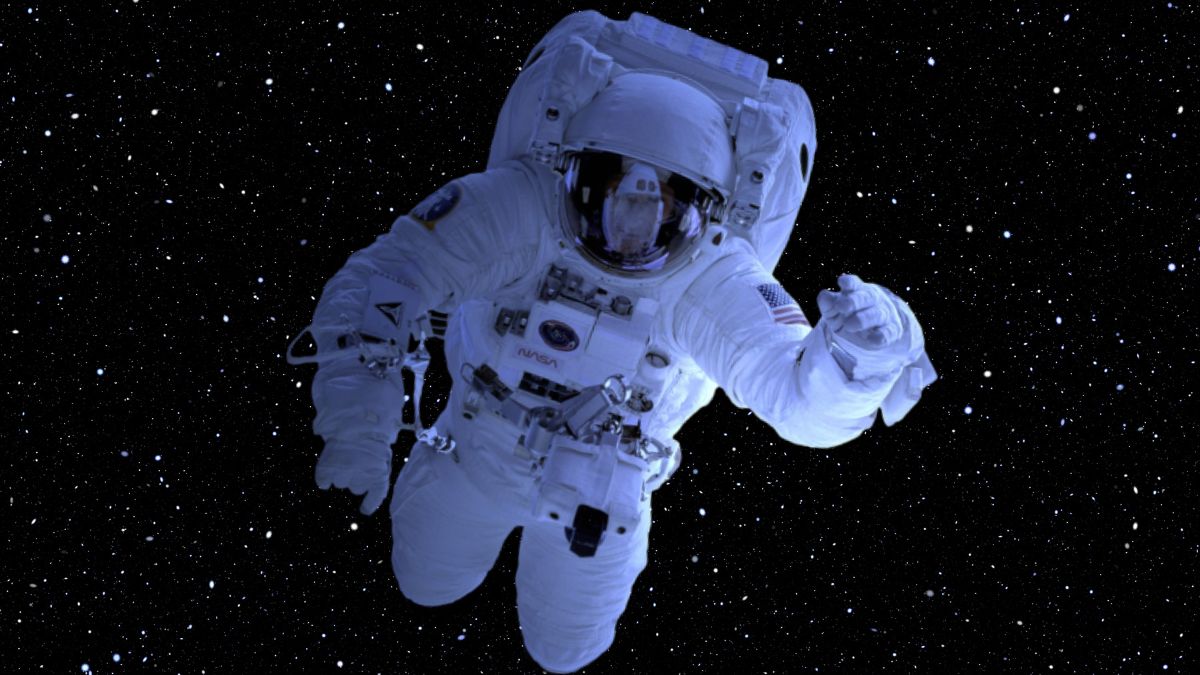Space exploration is fraught with unique challenges. Among these, astronaut hygiene and hydration management are some of the most critical.
Currently, astronauts rely on what are effectively advanced versions of adult diapers, known as Maximum Absorbency Garments (MAGs), to manage waste during spacewalks, or other extravehicular activities (EVAs). These EVAs can last up to eight hours, leading to prolonged exposure to waste, which can cause medical issues like urinary tract infections and gastrointestinal problems.
However, researchers at the Mason Lab at Weill Cornell Medical College have developed a groundbreaking solution to these problems. It’s a spacesuit straight out of a sci-fi movie. One that has a novel in-suit urine collection and filtration system that can convert urine into potable water.
Apart from solving the hygiene problem, the device also provides a sustainable hydration for long-duration space missions.
We explain how this works. But first, a look at what prompted the innovation.
The problem with current waste management
The current MAG system is a temporary solution at best. While it can collect urine and feces, its prolonged use leads to discomfort and health risks. Astronauts are exposed to waste for hours, which can lead to infections and other hygiene-related issues.
With the upcoming mission Artemis, which will put US astronauts back on the Moon, and perhaps send them beyond that too, there is an urgent need for a better waste management system that can enhance astronaut well-being and mission efficiency.
Impact Shorts
More ShortsThe innovative solution
The new system developed by the Mason Lab offers a revolutionary approach to in-suit waste management. This system uses an external pump to collect urine, which is then filtered using a process that combines forward osmosis (FO) and reverse osmosis (RO). The result is clean, drinkable water, creating a sustainable circular water economy within the spacesuit.
This is a two-step process.
Urine collection: The system starts with a modified MAG, made from a flexible compression material lined with antimicrobial fabric. Urine is collected through a silicone urine collection cup, which is designed differently for males and females based on anatomic differences. A humidity sensor detects the presence of urine, triggering a vacuum pump to collect it quickly, minimising skin contact time.
Urine collection garment prototype, back (left) and front (right), as proposed by the researchers. Image courtesy: Frontiers in Space Technology Filtration process: For the filtration, forward and reverse osmosis (RO) are used. Forward osmosis (FO) is an energy-efficient method that relies on an osmotic gradient between the urine (feed solution) and a concentrated salt solution (draw solution). Water naturally moves from the urine to the draw solution through a semipermeable membrane.After FO, the diluted draw solution undergoes RO, where external pressure forces the water through another semipermeable membrane, filtering out impurities and producing clean drinking water.
Urine collection cup CAD models (Left: male version, right: female version). Image courtesy: Frontiers in Space Technology
Efficiency and health standards
The system aims for an 85 per cent urine collection rate and a 75 per cent water recovery rate. It consumes less than 10 per cent of the spacesuit’s energy, ensuring that it does not overly burden the suit’s power supply. The filtered water meets health standards, maintaining low salt levels and effectively removing major urine solutes such as urea, uric acid, ammonia, and calcium.
Practical implementation
The FO-RO apparatus is compact and designed to fit within a pouch mounted on the back of the EMU. Although it adds roughly 8 kg to the suit’s weight, the benefits in terms of hygiene and resource efficiency far outweigh this slight increase in bulk. A typical void of 100–500 mL can be processed in a maximum of 5 minutes, ensuring quick removal and reducing the risk of skin irritation or infection.
Significance for future missions
With NASA’s Artemis missions on the horizon, which aim to return humans to the Moon, enhancing spacesuit hygiene and hydration systems is more important than ever. The current spacesuits are undergoing a re-evaluation, and innovations like the in-suit urine filtration system could play a crucial role in these missions. By ensuring astronauts have access to clean water and improved waste management, this system enhances mission efficiency and supports astronaut health.
In a nutshell
The development of a spacesuit that can convert urine into drinking water is undoubtedly a significant leap forward in space exploration technology. It addresses critical hygiene issues and provides a sustainable solution for water supply, crucial for long-duration missions. As the world prepares for future lunar missions and beyond, innovations like these will be key to ensuring the health and efficiency of astronauts, ultimately contributing to the success of space exploration endeavors.


)

)
)
)
)
)
)
)
)



